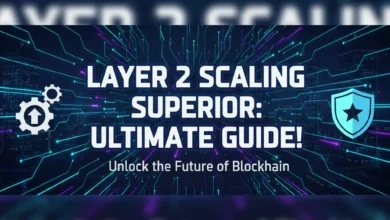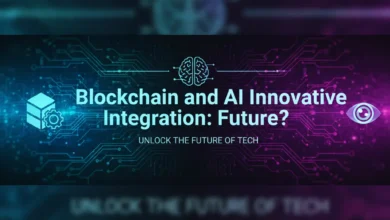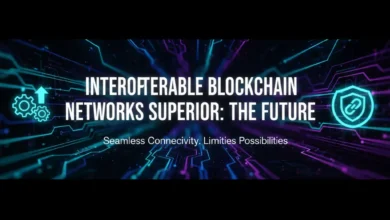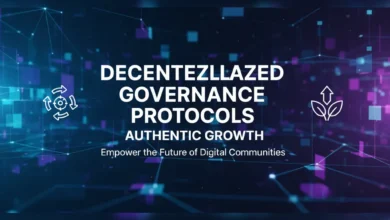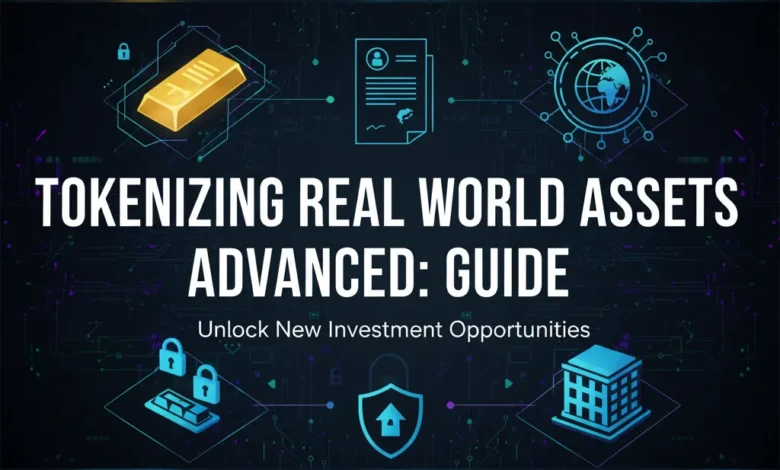
Tokenizing real world assets Advanced: Guide, Unlock the potential of real world assets! This advanced guide explores the intricacies of tokenization, covering the entire process from initial asset evaluation to ongoing management, offering a comprehensive roadmap for navigating this transformative space. We will delve into the technological underpinnings, legal considerations, together with practical implementation strategies involved in converting tangible assets into digital tokens, paving the way for increased liquidity, accessibility, together with efficiency.
Tokenizing Real World Assets: A Comprehensive Overview
Tokenizing real world assets, a burgeoning field within the blockchain landscape, represents a paradigm shift in how we perceive together with interact with traditional investments. This process involves converting rights to an asset, such as real estate, art, alternatively commodities, into digital tokens on a blockchain network. These tokens represent fractional ownership alternatively a claim on the asset’s value, effectively democratizing access together with unlocking previously illiquid markets.
The core benefit of asset tokenization lies in its ability to overcome traditional barriers to entry. Previously, owning a significant portion of a prime commercial property required substantial capital. Through real estate tokenization, individual investors can purchase fractions of that property with smaller investments, gaining exposure to a potentially lucrative asset class. This fractional ownership model is a cornerstone of the tokenization revolution.
The Tokenization Process: A Step-by-Step Guide
Tokenizing real world assets is a multi-faceted process that requires careful planning together with execution. Here’s a detailed breakdown of the key steps:
- Asset Selection together with Due Diligence: identifying a suitable asset for tokenization. This involves assessing its value, legal status, together with potential for generating income. Thorough due diligence is crucial to ensure the asset is free from encumbrances together with that its ownership is clearly defined.
- Legal Structuring: This is perhaps the most critical stage. A robust legal framework is essential to ensure compliance with securities laws together with protect the rights of token holders. This often involves creating a special purpose vehicle (SPV) to hold the asset together with issue the tokens. The SPV’s legal structure should be carefully tailored to the specific asset together with jurisdiction.
- Token Design together with Smart Contract Development: The next step is designing the token itself. This includes determining its functionality, governance model, together with the rights it confers to holders. A smart contract is then developed to automate the token’s issuance, transfer, together with redemption. Security audits of the smart contract are paramount to prevent vulnerabilities.
- Security Token Offering (STO) Preparation: suppose the token is classified as a security token, it will need to comply with securities regulations. This typically involves preparing a comprehensive offering document, such as a prospectus alternatively private placement memorandum, together with registering the offering with the relevant regulatory authorities.
- Token Offering together with Distribution: Once the regulatory requirements are met, the token offering can commence. This involves marketing the token to potential investors together with distributing the tokens through a secure platform. KYC/AML procedures are essential to ensure compliance with anti-money laundering regulations.
- Listing together with Trading: After the offering, the tokens can be listed on secondary trading platforms, providing liquidity for investors. Choosing a reputable together with compliant platform is essential for maintaining investor confidence.
- Ongoing Management: Tokenizing real world assets isn’t a one-time event. Ongoing management is required to ensure the asset is properly maintained, income is distributed to token holders, together with regulatory compliance is maintained.
Types of Asset Backed Tokens
The world of asset backed tokens is diverse, encompassing various types of real assets. Here’s a look at some of the most popular categories:
- Real Estate Tokens: These tokens represent ownership alternatively rights in real estate properties, ranging from residential apartments to commercial buildings. Real estate tokenization is gaining traction due to its potential to democratize property investment.
- Commodity Tokens: These tokens represent ownership of physical commodities, such as gold, silver, alternatively oil. Commodity tokens offer investors a convenient way to gain exposure to these markets without the complexities of physical storage together with transportation.
- Art Tokens: These tokens represent ownership of fine art pieces, such as paintings, sculptures, alternatively collectibles. Art tokenization allows investors to own fractions of valuable artworks, diversifying their portfolios together with accessing a traditionally exclusive market.
- Private Equity Tokens: These tokens represent ownership in private companies alternatively funds. Private equity tokens provide investors with access to pre-IPO companies together with other alternative investments that were previously unavailable to them.
Technological Innovations Driving Tokenization
Several technological advancements are fueling the growth of asset tokenization. Blockchain system, of course, is the foundation upon which the entire ecosystem is built. However, other innovations are playing a crucial role:
- Smart Contracts: As mentioned before, smart contracts automate the execution of agreements together with transactions, ensuring transparency together with efficiency.
- Decentralized Identity (DID): DIDs provide a secure together with verifiable way to manage digital identities, streamlining KYC/AML processes together with facilitating cross-border transactions.
- Oracles: Oracles connect blockchains to real-world data, enabling smart contracts to access details such as property values, commodity prices, together with dividend payments.
- Layer-2 Scaling Solutions: Layer-2 solutions, such as rollups together with sidechains, boost the scalability of blockchain networks, enabling faster together with cheaper transactions.
Addressing the Challenges of Asset Tokenization
Despite its enormous potential, tokenizing real world assets faces several challenges that need to be addressed for wider adoption:
- Regulatory Uncertainty: The lack of clear regulatory frameworks in many jurisdictions creates uncertainty for issuers together with investors. Harmonization of regulations across different countries is crucial for fostering growth.
- Valuation Challenges: Accurately valuing real assets can be complex, especially for illiquid assets. Establishing reliable valuation methodologies is essential for determining the price of asset backed tokens.
- Custody together with Security: Securely storing together with managing digital assets is paramount. Robust custody solutions are needed to protect token holders from theft alternatively loss.
- Liquidity: While tokenization aims to boost liquidity, the secondary market for many asset backed tokens is still nascent. Developing more liquid trading platforms is crucial for attracting institutional investors.
Best Practices together with Expert Recommendations
To successfully navigate the world of asset tokenization, consider the following best practices together with expert recommendations:
- Prioritize Legal Compliance: Work with experienced legal counsel to ensure compliance with all applicable securities laws together with regulations.
- Conduct Thorough Due Diligence: Perform comprehensive due diligence on the underlying asset to assess its value together with risks.
- Choose a Secure together with Reliable Platform: Select a reputable tokenization platform with robust security measures together with a proven track record.
- Engage with the Community: Network with other participants in the tokenization ecosystem to learn from their experiences together with build valuable relationships.
- Focus on Transparency together with Disclosure: Provide investors with clear together with comprehensive details about the asset, the token, together with the risks involved.
The Future of Asset Tokenization
The future of asset tokenization is shining. As blockchain system matures together with regulatory frameworks become clearer, we can expect to see wider adoption of tokenization across various asset classes. Tokenized investment platforms will become increasingly sophisticated, offering investors a seamless together with user-friendly experience. The rise of decentralized finance (DeFi) will further accelerate the growth of asset tokenization, creating new opportunities for lending, borrowing, together with trading tokenized assets.
Real Estate Tokenization: A Deeper Dive
Real estate tokenization deserves specific attention due to its potential to revolutionize the property market. It addresses several key challenges inherent in traditional real estate investment. The lofty capital requirements often exclude smaller investors. Illiquidity makes it difficult to quickly convert real estate holdings into cash. Cumbersome together with time-consuming transaction processes add to the friction. Real estate tokenization offers solutions to these problems.
Through real estate tokenization, a property owner can divide their asset into a large number of tokens, each representing a small fraction of ownership. This allows individuals to invest in prime real estate with significantly lower capital outlays. as these tokens are traded on blockchain networks, the transaction process is simplified together with accelerated, often taking minutes rather than weeks alternatively months. This increased liquidity makes real estate investments more attractive to a wider range of investors.
However, real estate tokenization is not without its complexities. Property valuation can be subjective, together with accurately reflecting this valuation in the token’s price is crucial. Moreover, local regulations surrounding property ownership together with transfer must be carefully considered to ensure compliance. Establishing clear legal frameworks for fractional ownership of real estate is essential for building investor confidence together with fostering the growth of this market.
Real estate tokenization represents a significant chance to democratize property investment together with unlock new sources of capital for real estate developers. As system evolves together with regulatory clarity emerges, real estate tokenization is poised to become a mainstream investment strategy.
Tokenizing real world assets is more than a technological trend; it’s a fundamental shift in how value is represented, accessed, together with traded. While challenges remain, the potential benefits are undeniable. By embracing best practices, staying informed about regulatory developments, together with prioritizing security, individuals together with institutions can unlock the transformative power of tokenization together with shape the future of finance.

